Intro to Time Complexity
If you have spent some time on sites like codewars, leet code, or other various algorithm site. You will see that there are many solutions for the same code problem. How do we know which solution is the best? Is it the solution with the shortest lines of code? The solution that takes the shortest amount of time to execute? How about the one that is more readable? Well the answer is complicated but, the time that it takes to execute can be generalized and be used to compare code. The reason why developers care about the runtime of code is to provide better user experience. According to Kissmetrics, 47 percent of visitors expect a website to load in less than 2 seconds. The following diagram shows the abandonment rate of websites vs the number of seconds a page takes to load.
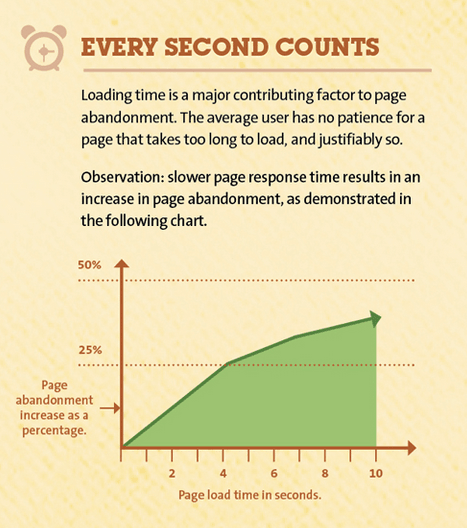
Okay, so we know that time complexity is important, but how do we quantify it? If you are new to this topic then you might be shocked that time complexity is not actually measured in a unit of time. We have the ability to quantify the amount of time it takes to execute code, so why don’t we just time two different solutions and see which one is faster? Well, time that code takes to run is dependent on too many other factors besides the code itself. For example, the time that it takes for code to run on my local machine is different depending on how many apps I have running in the background. Another difference can be seen when the same code is ran on other computers with different specifications. Therefore, timing the code is an unreliable way of determining time complexity.
Beginning of my coding journey
Just a little background before I start talking about time complexity. Before attending Flatiron bootcamp, there was one question on the pre-work that involved obtaining data within nested hashes. I will post a shortened version of this hash where the only value of the player’s hash is their shoe size here is this blog.
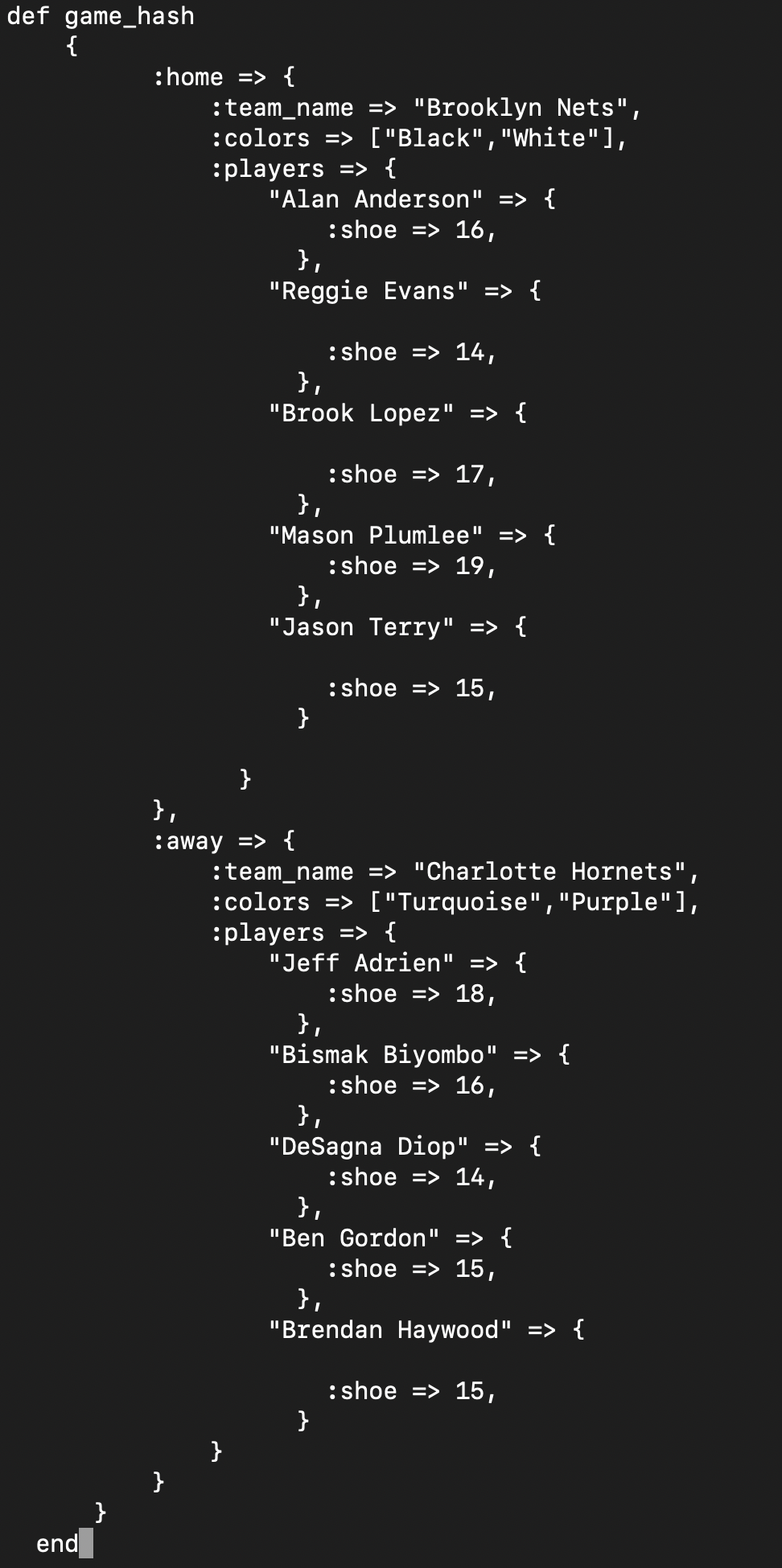
One part of the problem was to write a function that returned the shoe size of a player by passing the player’s name inside the function. Here was my initial feeble attempt(shoe_size) vs a restructured solution (shoe_size2) provided by my TCF Matt.
Here shows that both solutions work and produce the same result, given the same input.
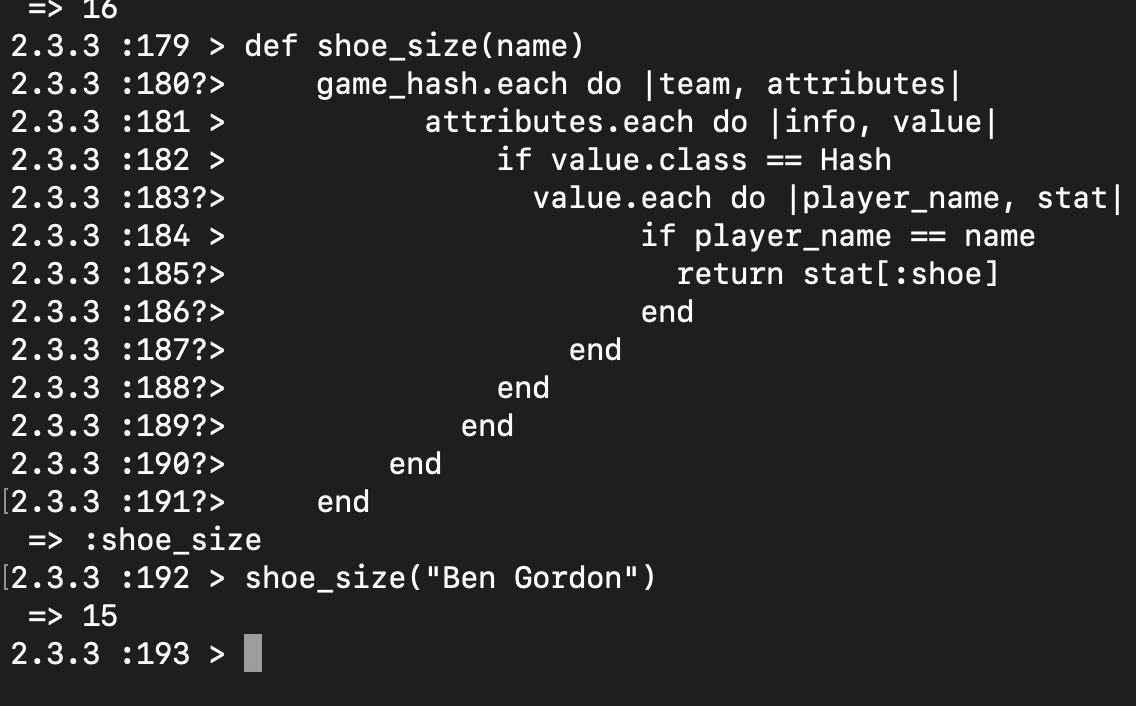

Even though both solutions worked, I was told to avoid iteration if there was another way to obtain the solution. At the time I did not understand why, however when I learned about time complexity I understood why my solution was inefficient. I will come back to this example later after I introduce time complexity.
Enter the Big O Notation
The big O notation allows us to talk about the runtime of code in a fancy/formal way in relation to the growth of the size of the input.It does so by letting us count the amount of simple operations a computer does. This way we obtain a non biased measurement for time complexity since the amount of operations stay constant no matter what computer we are on. Let’s look at some basic examples to help get an idea of the implementation of the concept.
Accessing a Single Element
The simplest case for complexity is when we are retrieving the value for a single element either in an array or a hash. The code below shows a key being retrieved from a hash.
 It does not matter if the code above had one key or a million keys, accessing a single key’s value will always require a single operations therefore the complexity is considered to be O(1).
It does not matter if the code above had one key or a million keys, accessing a single key’s value will always require a single operations therefore the complexity is considered to be O(1).
A Ruby .map iterator
For the next example let’s look at a ruby .map iterator,
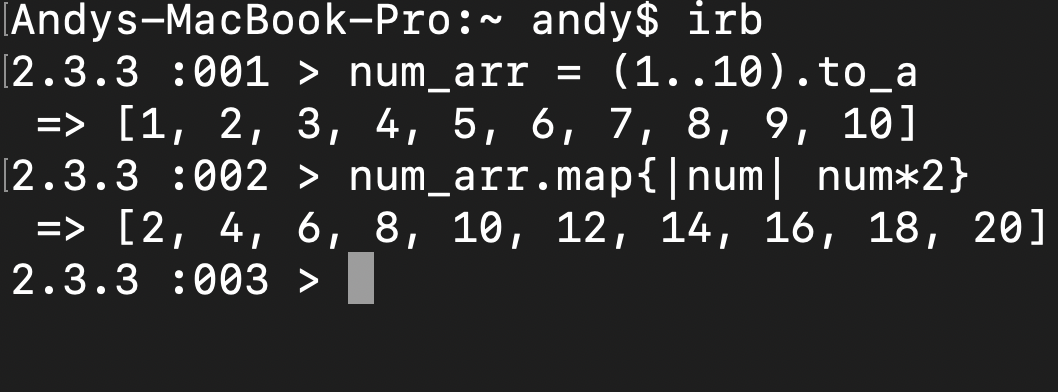 As you see in the example, map iterates through the whole array. In the example there was an array with numbers 1 to 10 inclusive, therefore showing 10 operations being done on the original array. If the size of the array was given a variable n (num_arr.length = n), then it would take n number of operations in order to get the result. Thus, the .map iterator in ruby will have a time complexity of O(n).
As you see in the example, map iterates through the whole array. In the example there was an array with numbers 1 to 10 inclusive, therefore showing 10 operations being done on the original array. If the size of the array was given a variable n (num_arr.length = n), then it would take n number of operations in order to get the result. Thus, the .map iterator in ruby will have a time complexity of O(n).
Even though this is not an in depth introduction to time complexities in programming, it gives the basic idea of what it is and why it is important. If we look back at the two solutions given for finding the shoe size of a nested hash down below we can see why my initial solution is inefficient.
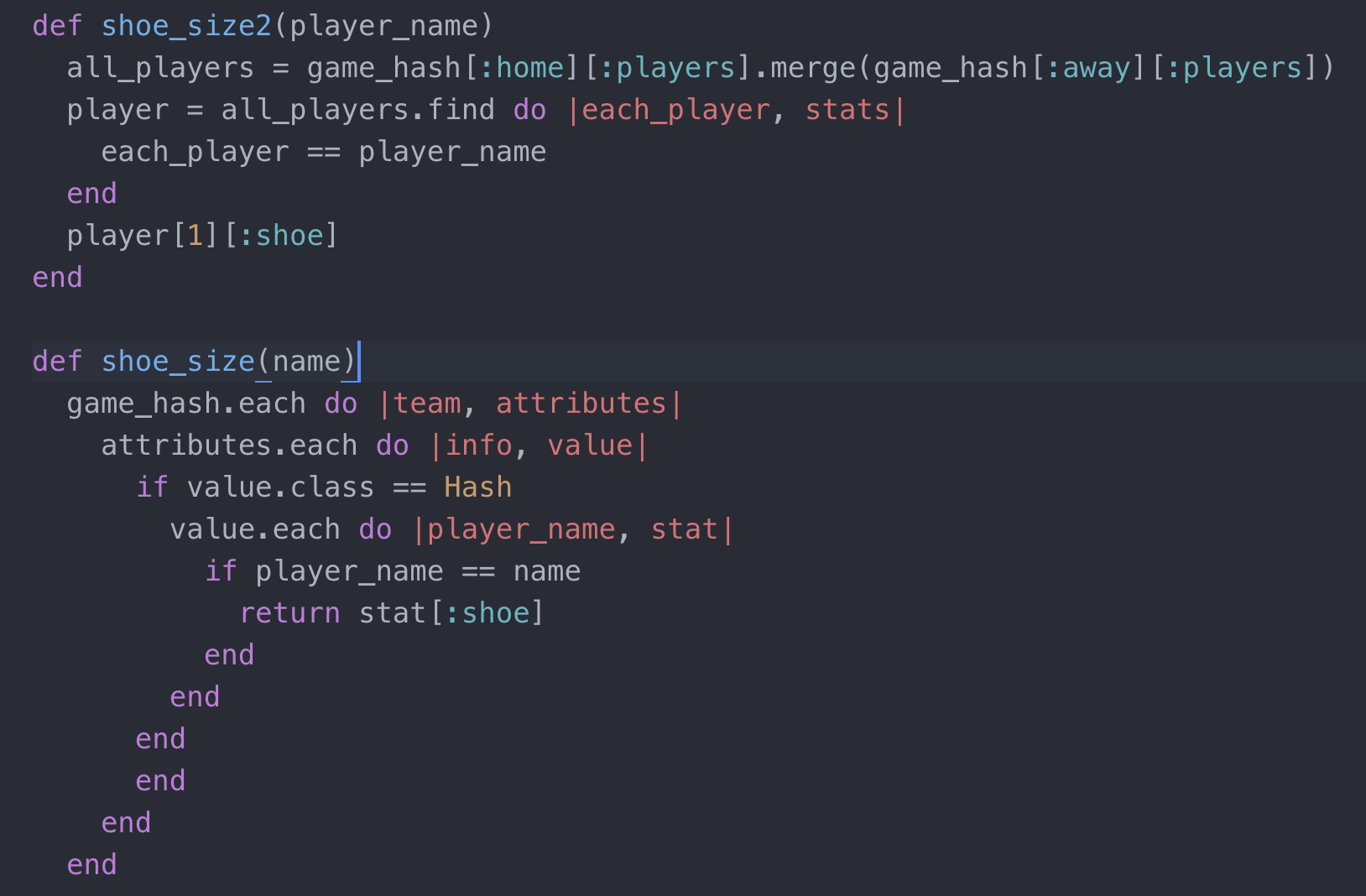
Without having to run the code and recording the time it would take for each one to run, we can easily see that my initial solution requires multiple iterations that are nested. Therefore, increasing the number of operations and time it takes to run.
